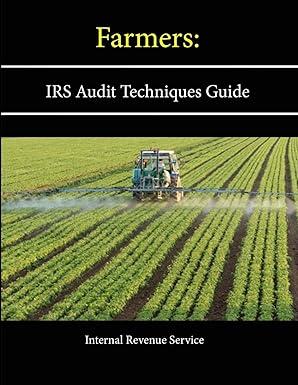Question
Dillon has a standard of 2 hours of labor per unit, at $18 per hour. In producing 2,000 units, Dillon used 3,850 hours of labor
Dillon has a standard of 2 hours of labor per unit, at $18 per hour. In producing 2,000 units, Dillon used 3,850 hours of labor at a total cost of $70,455. Dillon's labor price variance is
$1,555 F. |
$1,200 U. |
$2,895 F. |
$1,155 U |
Dillon has a standard of 2 hours of labor per unit, at $18 per hour. In producing 2,000 units, Dillon used 3,850 hours of labor at a total cost of $70,455. Dillon's labor quantity variance is
$1,555 F. |
$1,155 U. |
$2,700 F. |
$2,895 F. |
Budgeted overhead for Cinnabar Industries at normal capacity of 30,000 direct labor hours is $4.50 per hour variable and $3 per hour fixed. In May, $232,500 of overhead was incurred in working 31,500 hours when 32,000 standard hours were allowed. The overhead controllable variance is
$1,500 favorable. |
$7,500 favorable. |
$7,500 unfavorable. |
$3,750 favorable. |
Budgeted overhead for Cinnabar Industries at normal capacity of 30,000 direct labor hours is $4.50 per hour variable and $3 per hour fixed. In May, $232,500 of overhead was incurred in working 31,500 hours when 32,000 standard hours were allowed. The overhead volume variance is
$7,500 favorable. |
$8,250 favorable. |
$6,000 favorable. |
$3,750 favorable |
Which of the following is true if a company can accept a special order without affecting its regular sales and is within plant capacity?
Additional fixed costs will probably be incurred. |
Net income will decrease. |
Net income will not be affected. |
Net income will increase if the special sales price per unit exceeds the unit variable costs. |
Cara Industries incurred the following costs for 50,000 units:
Variable costs | $90,000 |
Fixed costs | 120,000 |
Cara has received a special order from a foreign company for 5,000 units. There is sufficient capacity to fill the order without jeopardizing regular sales. Filling the order will require spending an additional $4,250 for shipping.
If Cara wants to earn $4,000 on the order, what should the unit price be?
$1.65 |
$5.85 |
$2.60 |
$3.45 |
A company has a process that results in 15,000 pounds of Product A that can be sold for $16 per pound. An alternative would be to process Product A further at a cost of $200,000 and then sell it for $28 per pound. Should management sell Product A now or should Product A be processed further and then sold? What is the effect of the action?
Process further, the company will be better off by $20,000. |
Sell now, the company will be better off by $200,000. |
Sell now, the company will be better off by $20,000. |
Process further, the company will be better off by $180,000. |
Tram Manufacturing is starting business and is unsure of whether to sell its product assembled or unassembled. The unit cost of the unassembled product is $160 and Tram would sell it for $360. The cost to assemble the product is estimated at $72 per unit and Tram believes the market would support a price of $464 on the assembled unit. What is the correct decision using the sell or process further decision rule?
Process further, the company will be better off by $32 per unit. |
Sell before assembly, the company will be better off by $72 per unit. |
Sell before assembly, the company will be better off by $104 per unit. |
Process further, the company will be better off by $104 per unit. |
A company is considering replacing old equipment with new equipment. Which of the following is a relevant cost for incremental analysis?
Annual depreciation charge on the old equipment |
Book value of the old equipment |
Estimated annual depreciation of the new equipment |
Cost of the new equipment |
Step by Step Solution
There are 3 Steps involved in it
Step: 1

Get Instant Access to Expert-Tailored Solutions
See step-by-step solutions with expert insights and AI powered tools for academic success
Step: 2

Step: 3

Ace Your Homework with AI
Get the answers you need in no time with our AI-driven, step-by-step assistance
Get Started


